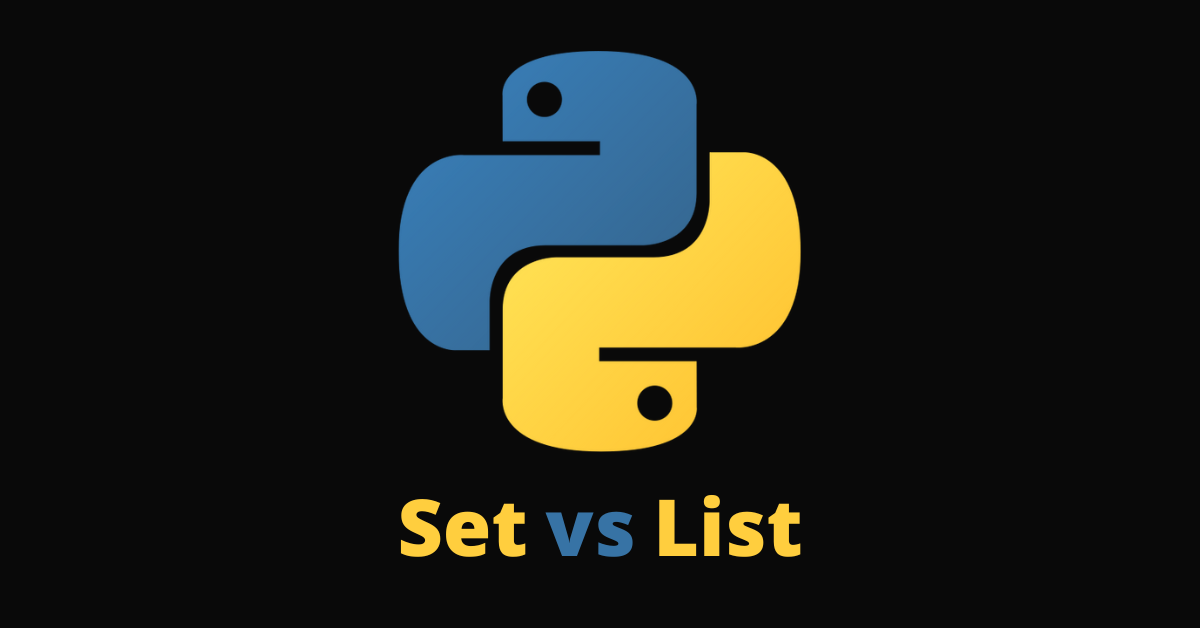In Python, set and list are both data structures for storing and organizing any values. Those values could be numbers, strings, and booleans.
In this article, we'll look at the differences between set and list. But before that, let's take a look at what both set and list are.
What We'll Cover
- What is a Python
set? - How to Create a Set in Python
- What is a Python
list? - How to Create a List in Python
- What is the Difference between a Set and a List?
- Conclusion
What is a Python set?
A set is a collection of unordered and unique values. The values in a set are unique because there cannot be any duplicates.
The items in a set are also immutable – you can't change them. But you can still add and remove from the collection.
In short, a set stores multiple values in curly braces or inside the set() constructor.
How to Create a Set in Python
To create a set in Python, you can use the set() constructor or curly braces.
Set with the set() constructor:
country_set = set(("USA", "Ukraine", "Nigeria", "Ghana"))
print(country_set) #{'Ghana', 'USA', 'Ukraine', 'Nigeria'}
Notice I used two parentheses to create the list. That's because the set() constructor expects one argument. Putting all the values in another set of parentheses makes all the values a single argument.
The set can also contain multiple data types – strings, numbers, or booleans:
multi_set = set(("freeCodeCamp", True, 12))
print(multi_set) #{True, 12, 'freeCodeCamp'}
You can also create a set with curly braces like this:
fruit_set = {"Apple", "Avocado", "Mango", "Cashew"}
print(fruit_set) #{'Mango', 'Apple', 'Avocado', 'Cashew'}
And you can include multiple data types in a set created with curly braces:
random_set = {True, "Laptop", "Phone", 5}
print(random_set) #{True, 'Laptop', 5, 'Phone'}
What is a Python list?
A list is a variable for storing multiple values in Python. It's one of the built-in data structures in Python along with sets, tuples, and dictionaries. If you're familiar with JavaScript, a Python list is like a JavaScript array.
How to Create a List in Python
You can create a Python list with the list() constructor or square brackets:
# List with list() constructor
rand_list = list(("Rice", "Salad", "Eba", 4, True))
print(rand_list) # ['Rice', 'Salad', 'Eba', 4, True]
# List with square brackets
another_rand_list = ["Pele", 1, True]
print(another_rand_list) # ['Pele', 1, True]
What is the Difference between a Set and a List?
| Basis | Set | List |
|---|---|---|
| Creation | You create a set with the set() constructor or curly braces. |
You create a list with the list() constructor or square brackets. |
| Duplicate | A set cannot have duplicate values. All values must be unique. | A list can have duplicate values. |
| Order | A set is unordered. When you print the items in a list, they don't come in the order you arranged them. | A list is ordered. When printed, the items in the list are returned in the same order put in. |
| Mutation | You can't change the items of a set, but you can add to the set and remove from it. | You can change the items in a list and you can add to the list. |
Conclusion
Sets and lists are built-in data structures you can use to store and arrange values in Python.
If you're wondering which to use, it depends on the use case. If you don’t want the values in the data to change, you can use a set. But if you want the items to change, you can use a list. You can also take into account whether the order of the items matters to you or not.
That's why this article took you through what set and list are, how to create them, and most importantly the differences between the two of them.
Thanks for reading.

